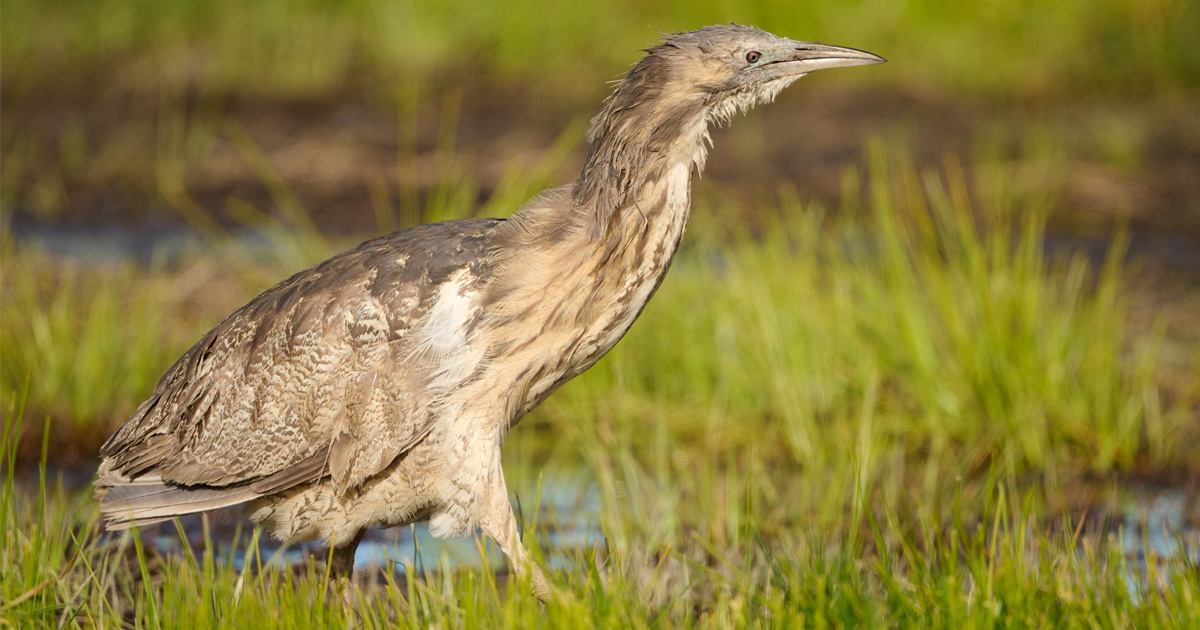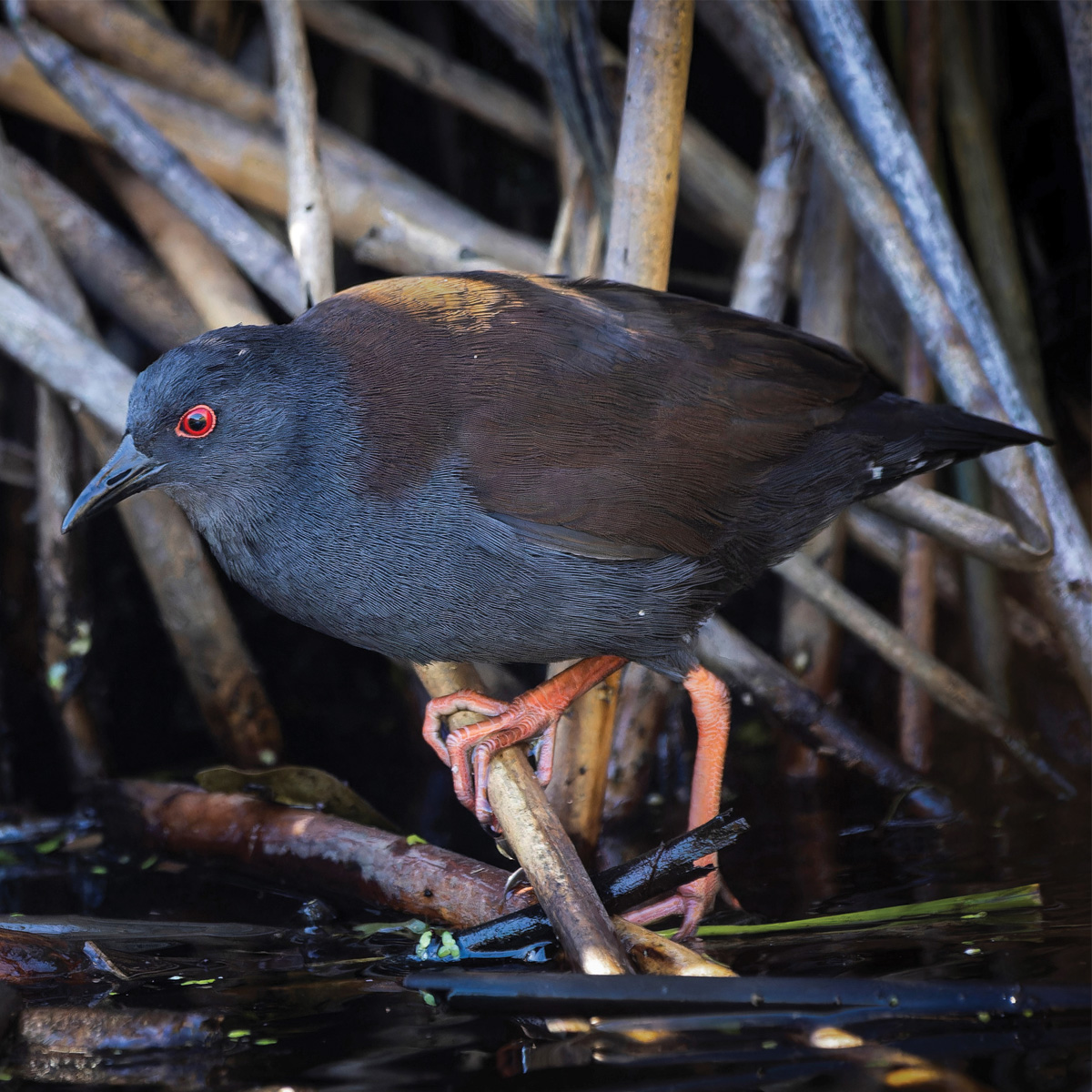Both the Otago matuku-hūrepo (Australasian bittern) and pūweto (spotless crake) have been identified during the first year of a five-year study by the Otago Regional Council (ORC), Birds New Zealand, Department of Conservation – Te Papa Atawhai, University of Otago and Forest and Bird Society.
The researchers want to establish the distribution of each species in Otago, says ORC’s Terrestrial Ecologist Dr Scott Jarvie.
He says it’s now rare to see matuku-hūrepo as their numbers had greatly declined following the destruction of 90% of their wetland habitat.
“We’re really keen to hear of any sightings of these elusive birds,” Dr Jarvie says.
The matuku-hūrepo is a large wetland bird which is hardly ever seen, it is a shy and secretive species that blends into its surroundings, lives in difficult to access habitat, and there aren’t many of them left, Dr Jarvie says.
“We want to understand more about distribution and population trends and the implications of wetland management practices on the matuku-hūrepo,” he says.

Elusive . . . a matuku-hūrepo (Australasian bittern). Photo: Craig McKenzie.
The survey project also discovered pūweto (spotless crake) in a new Otago location when looking for matuku-hūrepo.

Rarely seen . . . a pūweto (spotless crake). Photo: Oscar Thomas.
Both birds are on the New Zealand Threat Classification System (NZTCS).
Matuku-hūrepo are classified as Nationally Critical, the same threat classification as kākāpo and tūturiwhatu or rako (southern New Zealand dotterel), and categorised as in ‘serious trouble’ by the Parliamentary Commissoner for the Environment in 2017. The pūweto is listed as At Risk – Declining.
During the past first year of the study, matuku-hūrepo were recorded in the following areas: Catlins, including Tahakopa and Fleming valleys and around Catlins Lake; Lake Tuakitoto; Te Nohoaka o Tukiauau / Sinclair Wetlands; and also near Queenstown.
“The distribution of matuku-hūrepo and how many individuals are in Otago is currently unknown. Anecdotally, there is only a small number of matuku-hūrepo in the region, which is why the next phase of surveying is so important,” Dr Jarvie says.
Birds New Zealand representative Mary Thompson says it’s encouraging to detect matuku-hūrepo in these locations, but more information is needed from across Otago.
During the matuku-hūrepo breeding season from August to December adult males make a distinctive booming call, likened to blowing over the top of a bottle, making a ‘vroom, vroom’ sound, mainly around dusk and dawn, Ms Thompson says.
“The males make this eerie booming noise in spring to attract females, so we put out acoustic recording devices in wetlands around the region to see if we could detect the presence of bittern by recording their boom. During last spring we detected bittern at several locations,” Ms Thompson says.
“We’ll be checking out more locations this coming breeding season and bittern may still turn up in places where we didn’t know they were before,” she says.
The Department of Conservation – Te Papa Atawhai Technical Advisor Bruce McKinlay says while recording the booming male birds is important, any sighting of matuku-hūrepo should be reported; either on bitterns.otago@gmail.com or birds.otago@birdsnz.org.nz.
Forest and Bird’s Tautuku Restoration project manager Francesca Cunninghame was thrilled when pūweto were discovered in late 2022 in the Fleming wetland, situated within Forest and Bird’s Lenz Reserve, near Papatowai in the Catlins. It was the first record able to be verified for this rarely seen species in this part of Otago.
She says the team has subsequently heard pūweto on several occassions in the Fleming wetland, including a winter survey where the entire wetland was checked. A further survey is now planned for later in the year to try and get a better estimate of numbers.
The pūweto recorded as part of this project was the first reported in Otago since 2015 as shown on eBird – an online database of bird observations providing scientists, researchers and amateur naturalists with real-time data about bird distribution and abundance.
Background for Editors
Matuku-hūrepo / Australasian bittern facts
- Also found in Australia and possibly New Caledonia
- Global population may be less than 2000
- Aotearoa New Zealand population estimated between 250–1000 mating individuals, with a predicted and ongoing 50–70% decline
- 90% of their original wetland habitat has been lost through drainage and land development
- Vulnerable to introduced predators; cats, stoats and rats
- Some also killed when hit by vehicles on roads
- Starvation is a problem for some birds, indicating poor freshwater ecosystem health
- Matuku-hūrepo are a taoka [treasure] to Māori and appear in legends, stories, early pictures and metaphor. Numerous place names refer to them. They were once an important food source and their feathers were used for ceremonial decoration
Pūweto / spotless crake facts
- Are solitary and monogamous, with breeding occurring deep in wetlands
- 90% of their original wetland habitat has been lost through drainage and land development
- Vulnerable to introduced predators; cats, dogs, stoats and rats
- Some are also killed by vehicles on roads or flying into power lines
- They may move between wetlands regionally and nationally
- They are a potential indicator of wetland health, being dependent on the presence of high quality and ecologically diverse habitats and rich food supplies
Use of photos must include photographer credit.
